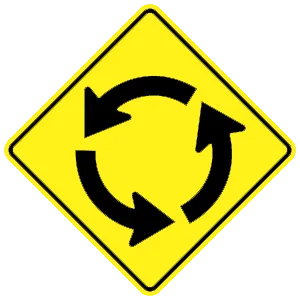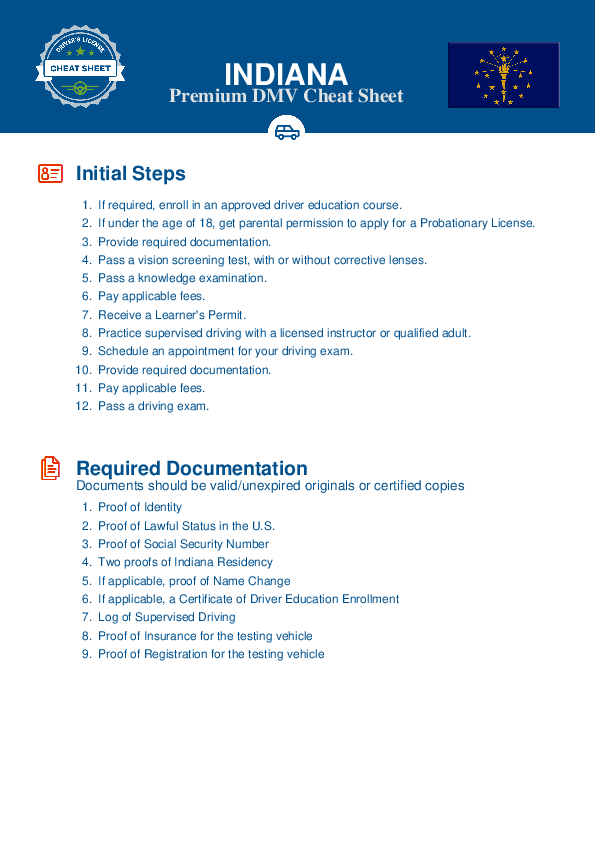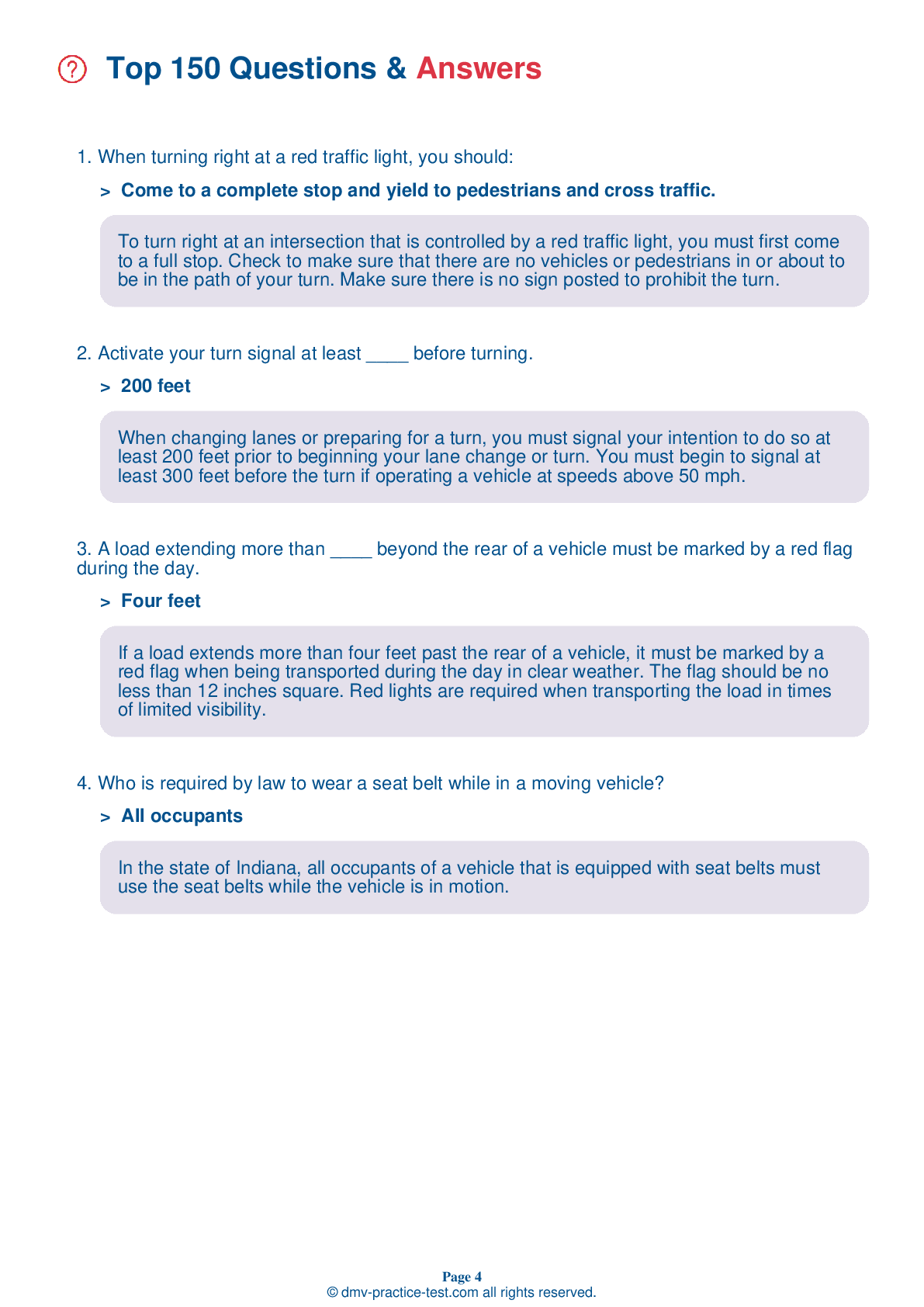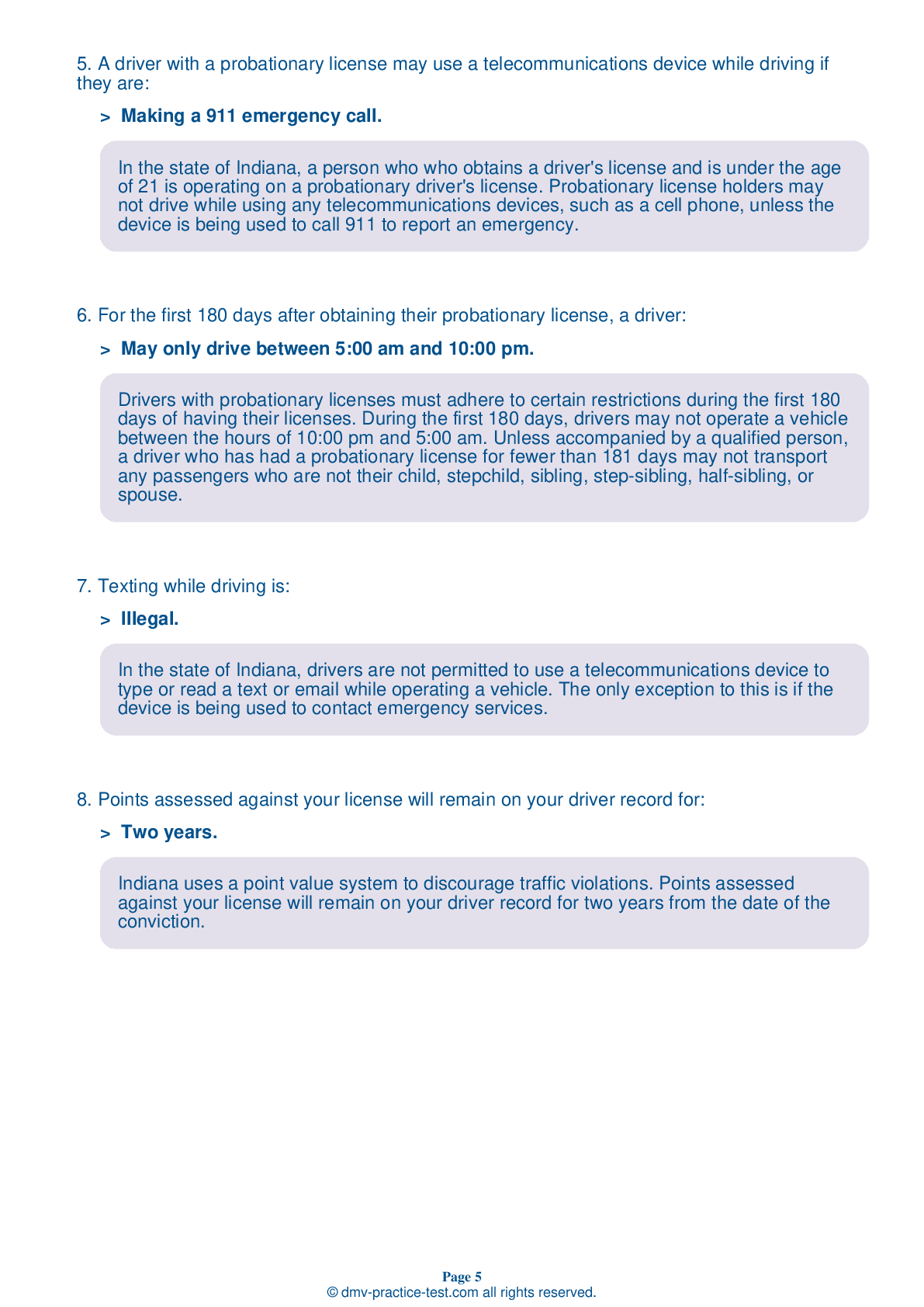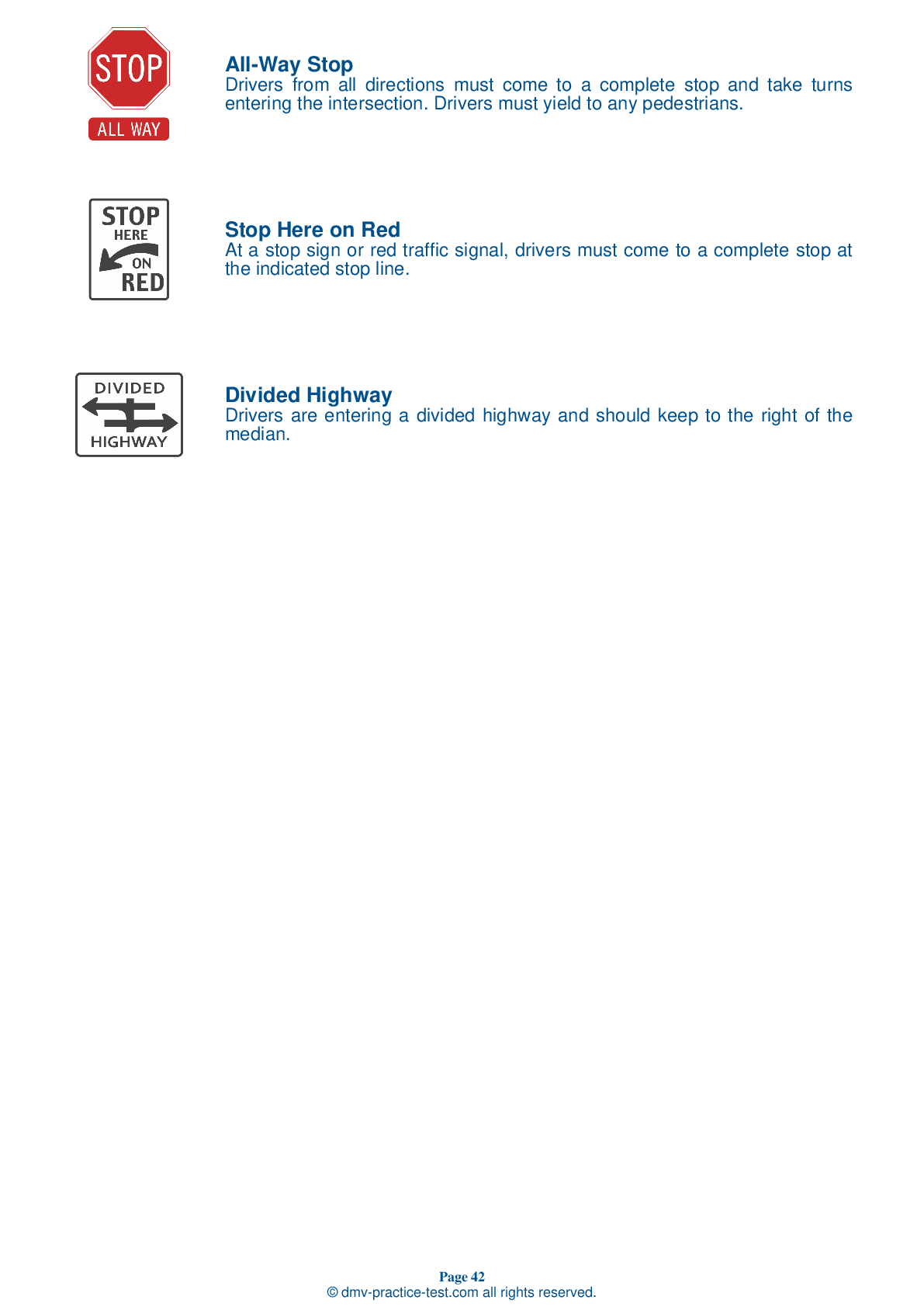FREE Indiana DMV Practice Test #15 Page 2 of 5
This set of Indiana DMV practise tests has been updated for January 2025. It includes questions based on the Indiana Driver Handbook's most significant traffic signals and laws for 2025. Use actual questions that are very similar (often identical!) to the DMV driving permit test and driver's licence exam to study for the DMV driving permit test and driver's licence exam.
On the practise exam, each question gets a tip and explanation to help you remember the concepts. The written component of the official Indiana DMV test will include questions about traffic rules, traffic signs, and driving statutes, as well as information from the Driver Handbook.
To obtain a passing grade, you must correctly answer 44 of the 50 questions. Take our DMV practise exam to help you prepare for your Indiana instruction permit or driver's licence.
The DMV exam is available in several languages.
Using any kind of testing assistance will result in an automatic fail, and the DMV may take additional action against your driver's licence, so stay away from it.
9 . You may drive around the gates at a railroad crossing:
You are required to stop at all railroad crossings when signals warn of an approaching train. These signals may include flashing red lights, a lowered crossing gate, a flagger signaling, or a train’s audible signal of warning. Do not attempt to go around a lowered gate.
10 . If you drink alcohol socially, what helps ensure safe driving?
One strategy to avoid driving while impaired or intoxicated is to arrange for a ride home with a friend who does not drink. Drinking coffee or taking a cold shower cannot reduce your blood alcohol content or reduce the effects of alcohol. On average, it takes about an hour for the body to eliminate the alcohol from a single drink.
11 . When entering a highway from an entrance ramp, you should generally:
Entrance ramps for highways often have acceleration lanes. When merging with traffic from an acceleration lane, you should put your signal on, look for an opening in traffic, accelerate up to the speed of traffic, and merge into an opening in traffic.
12 . This sign means:
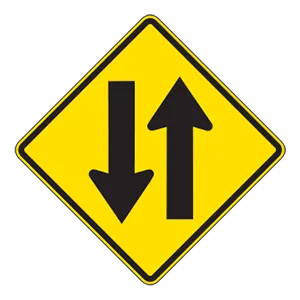
Warning signs prepare drivers for upcoming road conditions and hazards and are usually yellow with black markings. This sign tells drivers that they may encounter traffic coming from the opposite direction.
13 . This sign means:
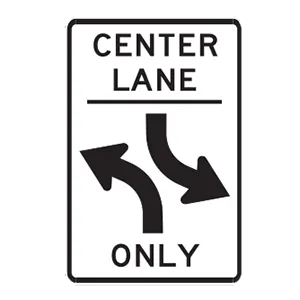
Regulation signs regulate traffic speed and movement, displaying rules which drivers must obey. This regulation sign indicates that drivers from both directions may only use the shared center lane to turn left. Drivers should not use the center lane as a usual driving lane.
14 . You must stop at a railroad crossing when:
You must stop at a railroad crossing when directed to do so by a flagger or stop sign. Stop when flashing red signals and gates are present and operating.
15 . This sign means:
